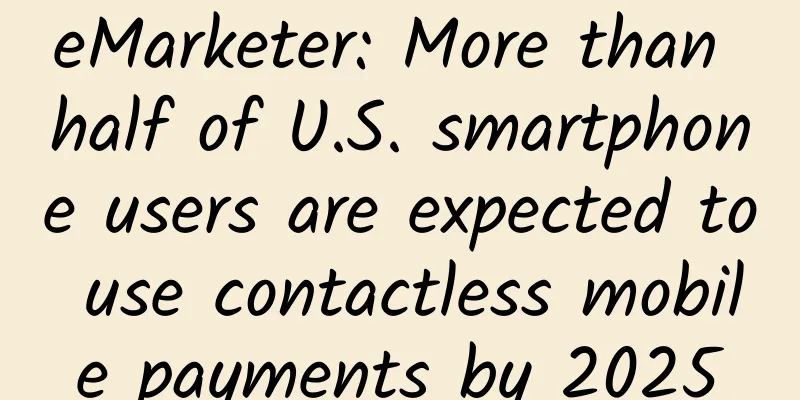eMarketer: More than half of U.S. smartphone users are expected to use contactless mobile payments by 2025

|
Among other tech trends accelerated by the COVID-19 pandemic, the use of contactless mobile payments has boomed in 2020. According to a recent report from analyst firm eMarketer, in-store mobile payment usage in the U.S. grew 29% last year as the pandemic prompted consumers to swap cash and credit cards for potentially safer mobile payment options at the point of sale. Last year, 92.3 million U.S. consumers aged 14 or older used a proximity-based mobile payment at least once in the six months of 2020 – a number eMarketer expects to grow to 101.2 million this year. And eMarketer predicts that by 2025, more than half of U.S. smartphone users will use contactless mobile payments. The highest adoption rates last year were among younger consumers, including Generation Z and millennials. eMarketer expects the former to account for more than 4 million of the 6.5 million total new mobile wallet users per year from 2021 to 2025. Meanwhile, millennials will continue to account for about 4 in 10 mobile wallet users. Multiple industry reports have noted the impact on the mobile wallet industry in general, with a report earlier this month from financial and investment firm Finaria estimating that the industry will grow 24% from last year to reach $2.4 trillion in 2021. The firm has said that while Asian markets, especially China, have been leading in the adoption of mobile payments, the United States has struggled earlier due to slow adoption of mobile payment technology in retail stores. But now, the United States has grown to become the second largest market, with $465.1 billion in mobile payment transactions, which will grow to $698 billion in 2023. The pandemic has pushed lagging retailers to finally join the ranks of mobile payments. A mid-year survey released by the National Retail Federation and Forrester in 2020 found that 69% of retailers have increased contactless payments, and 67% of retailers now accept some form of contactless payment, including mobile payments and contactless cards. As a result of changes in the industry, eMarketer reports that not only is mobile wallet usage increasing, but average annual spending per user is also rising. The firm predicts that this figure will increase 23.6% from approximately $1,973.70 in 2020 to $2,439.68 in 2021 and exceed $3,000 by 2023. In the United States, Apple Pay remains the number one player in mobile payments, with an estimated 43.9 million users in 2021 and an expected growth of 14.4 million between 2020 and 2025, outpacing its competitors. Starbucks will remain the second largest player with 31.2 million users, followed by Google Pay, which will add 10.2 million users during the time period. Meanwhile, Samsung Pay's growth has stagnated, with only 2 million users expected to be added between 2020 and 2025. |
>>: Mixpanel: As of April 2021, the overall usage rate of iOS 14 reached 90%
Recommend
LH value changes during ovulation
For many girls, their body temperature changes si...
What to do if your ears are allergic to earrings
Allergy is a common symptom in daily life. Some p...
Can I eat donkey-hide gelatin to regulate my menstrual period?
Donkey-hide gelatin is a blood tonic food, and li...
Can I have sex during my menstruation?
Menstruation is a normal physiological phenomenon...
Postpartum supplements list
What to eat after giving birth? Postpartum food s...
What are the precautions when washing the vulva with white vinegar?
The cleanliness of women's genitals has a sig...
Causes of folliculitis of labia minora
With the arrival of summer, the weather is relati...
How to regulate diet for irregular menstruation?
Women's bodies are relatively weak during men...
Menstruation is not clean and bright red for 20 days
Some women's menstrual period has not ended e...
My daughter sweats a lot when she sleeps at night
Young children often experience sweating symptoms...
Why do girls have dysmenorrhea?
Menstrual pain is a common problem for many women...
Can I eat pears during menstruation?
We all know that the pear is a fruit with a relat...
Foods that cannot be eaten for breast nodules
Breasts are very important for women. Many women ...
Is 2.0cm of pelvic fluid serious?
Pelvic effusion is a condition that occurs in man...
Can I eat glutinous rice during menstruation?
Women’s immunity is at its lowest during menstrua...









